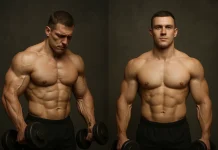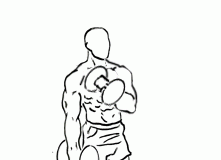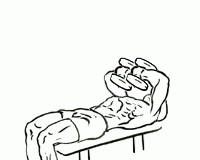Last Updated on January 27, 2025
While squats and lunges dominate lower-body workouts, the inner thighs often get sidelined—until a lack of strength leads to discomfort or injury. The thigh adductor machine is your ally for targeting these underappreciated muscles, fostering hip stability, and creating symmetrical, powerful legs. In this guide, we’ll explore how to master the thigh adductor exercise, its benefits, and how to integrate it into your routine for balanced strength and aesthetics.
Why Inner Thigh Strength Matters
The adductor muscles—adductor longus, brevis, magnus, gracilis, and pectineus—are critical for daily movement and athletic performance. Here’s why you shouldn’t skip them:
- Hip and Pelvic Stability
Strong adductors anchor your pelvis during walking, running, and lateral movements, reducing strain on the lower back and knees. - Injury Prevention
Weak inner thighs contribute to groin strains and knee valgus (inward collapse), common in sports like soccer or hockey. Strengthening them safeguards against these issues. - Enhanced Athletic Performance
Adductors power movements like cutting, pivoting, and jumping. Strong inner thighs improve agility and explosiveness. - Balanced Physique
Overdeveloped outer thighs paired with weak adductors create asymmetry. Training both ensures proportional leg development. - Functional Fitness
From climbing stairs to stabilizing during single-leg exercises, adductors are essential for everyday mobility.
How to Use the Thigh Adductor Machine: Step-by-Step
Proper form is key to targeting the inner thighs effectively and safely.
Step 1: Set Up the Machine
- Sit on the adductor machine with your back flat against the pad.
- Adjust the seat so your hips and knees form 90-degree angles.
- Place the inside of your knees against the padded lever arms.
Step 2: Engage Your Core
- Pull your navel toward your spine to stabilize your pelvis and protect your lower back.
Step 3: Execute the Movement
- Adduction Phase: Press your legs together against the pads, squeezing your inner thighs. Keep the motion slow and controlled.
- Peak Contraction: Hold for 1–2 seconds at the midpoint, maintaining tension.
Step 4: Return with Control
- Gradually release the weight back to the starting position, resisting the machine’s pull. Avoid letting the pads snap open.
Step 5: Repeat
- Aim for 3–4 sets of 12–15 reps, using moderate resistance to prioritize muscle endurance and mind-muscle connection.
Pro Tips for Maximizing Results
- Focus on Form Over Weight
Heavy weights can lead to jerky movements. Start light to perfect your technique. - Mind Your Posture
Keep your chest up and shoulders relaxed. Avoid arching your back or leaning forward. - Control the Tempo
Use a 3-second eccentric (return) phase to maximize muscle engagement. - Breathe Strategically
Exhale as you press your legs together; inhale during the return. - Pair with Abductor Work
Train adductors and abductors in the same session for balanced hip strength.
Variations and Alternatives
1. Resistance Band Adductions
Sit on the floor with a loop band around your thighs. Squeeze your legs together against the band’s resistance.
2. Side-Lying Adductor Lifts
Lie on your side, top leg bent over the bottom leg. Lift the bottom leg toward the ceiling to target the inner thigh.
3. Sumo Squats
A compound movement that engages adductors. Widen your stance and keep toes turned slightly outward.
4. Ball Squeezes
Place a yoga ball between your knees and squeeze for 10–15 seconds, holding the contraction.
Common Mistakes to Avoid
- Using Momentum: Swinging legs or jerking the weight reduces effectiveness. Move deliberately.
- Partial Range of Motion: Failing to fully open the legs limits muscle activation.
- Overarching the Back: This shifts effort to the lower back. Keep your core tight.
- Neglecting the Eccentric: Don’t drop the weight—control it to build strength.
Incorporating Adductor Work into Your Routine
- For Toning: Pair with outer thigh exercises (abductors) and aim for 2–3 sets of 15–20 reps.
- For Strength: Use heavier resistance for 8–12 reps, resting 60–90 seconds between sets.
- For Athletes: Add explosive adduction pulses (quick squeezes) to mimic sport-specific demands.
Include adductor training 1–2 times weekly, ideally after compound lifts like deadlifts or leg presses.
Final Thoughts
The thigh adductor machine is more than a “niche” exercise—it’s vital for holistic leg strength, injury resilience, and balanced aesthetics. By prioritizing controlled movements and consistent training, you’ll build inner thighs that support every step, sprint, and squat. Remember: Strong adductors mean stronger, more confident movement. Now, take a seat, press with purpose, and feel the burn where it counts!
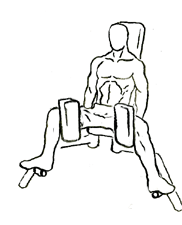
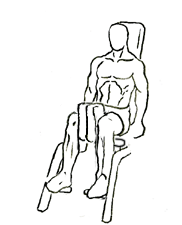
Exercise images by Everkinetic.



